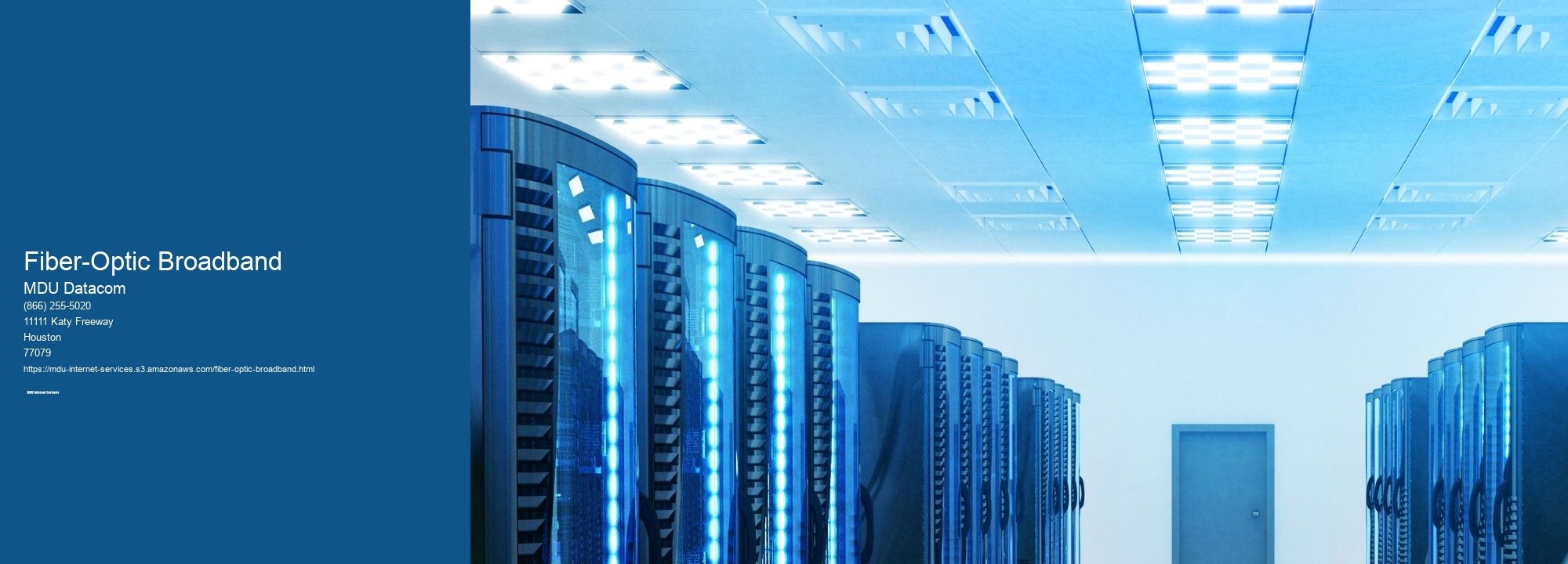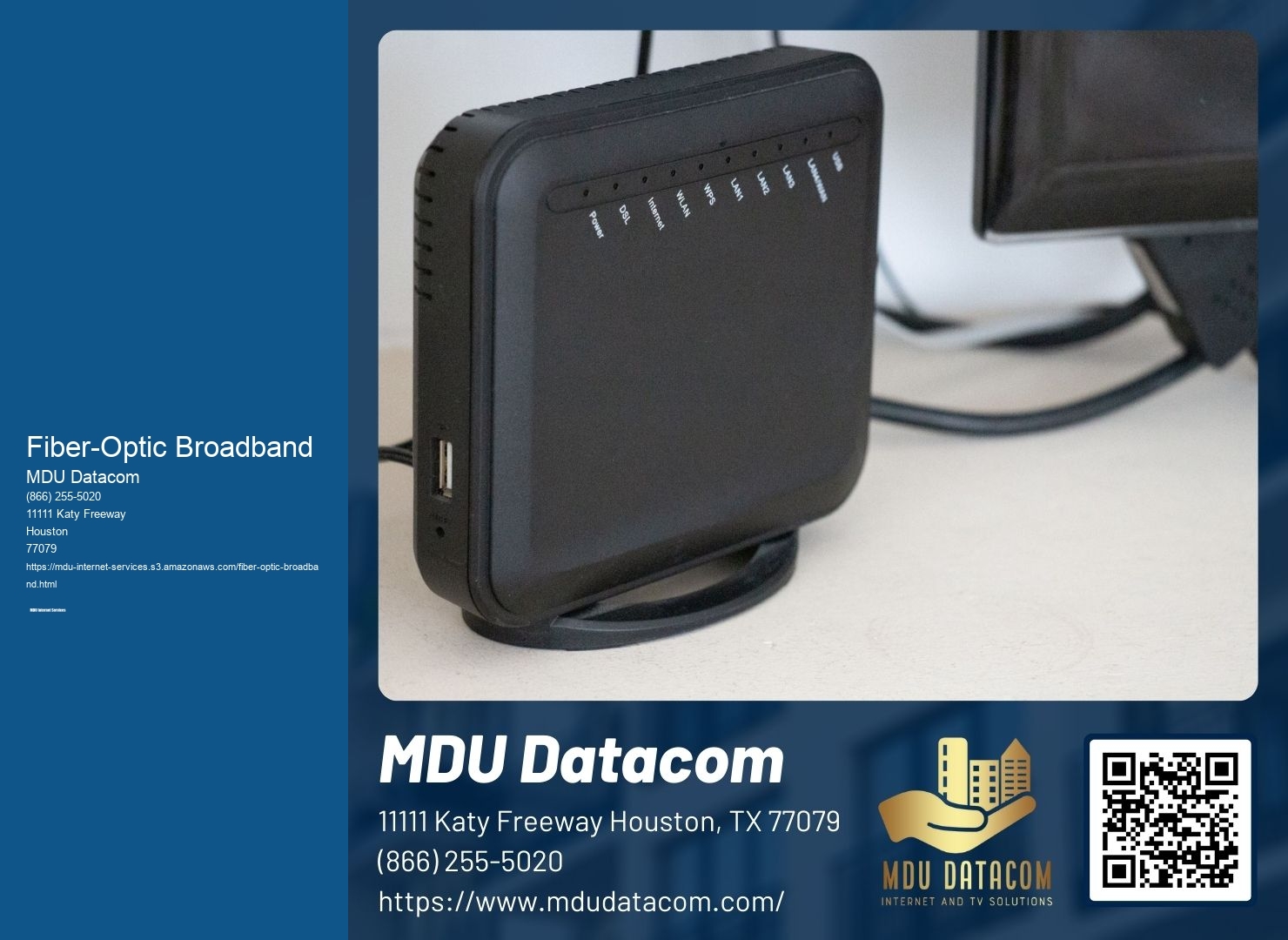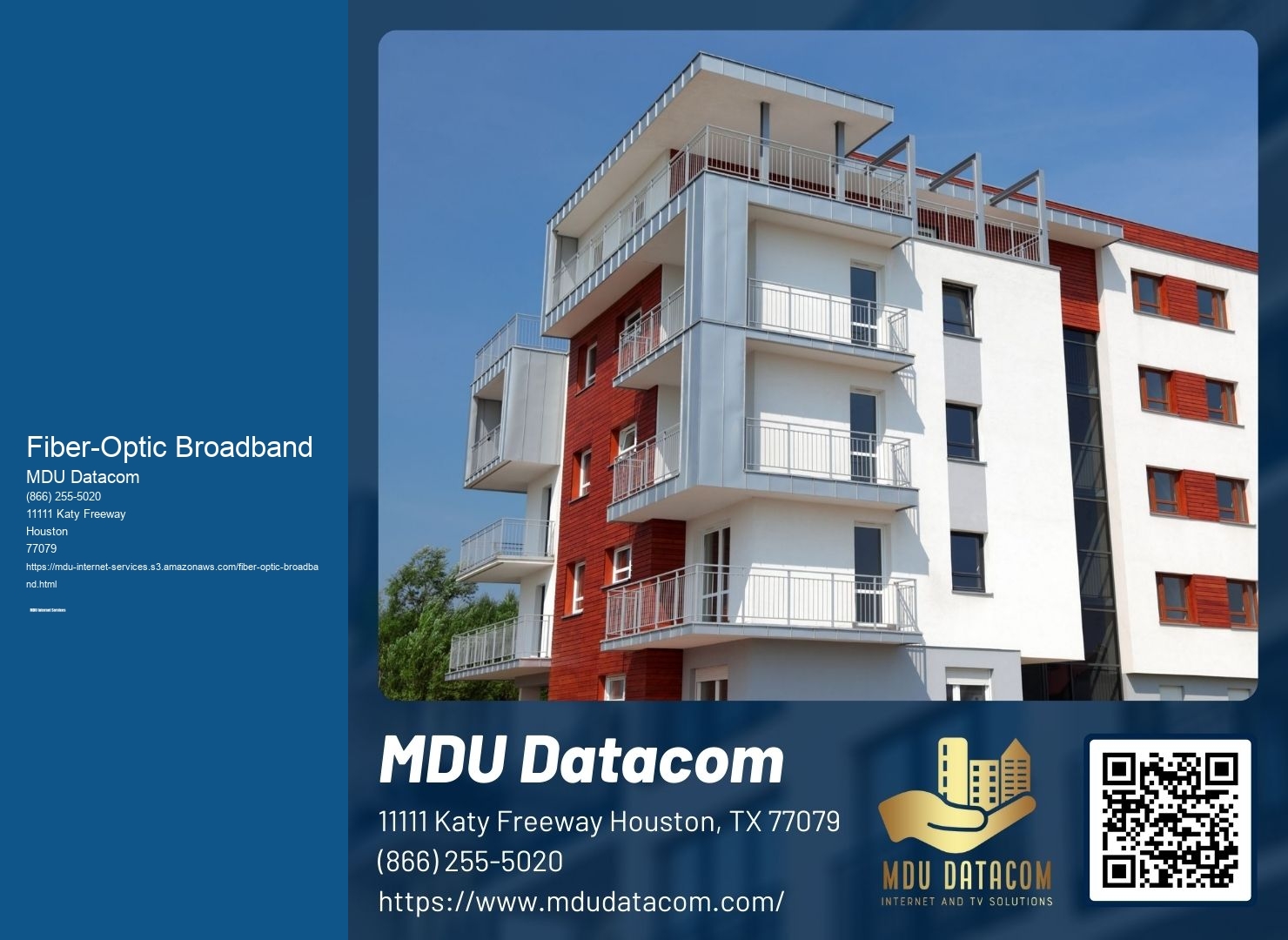

Fiber-optic broadband is a type of internet connection that uses fiber-optic cables to transmit data at high speeds. Unlike traditional broadband, which typically uses copper cables, fiber-optic broadband uses thin strands of glass or plastic to transmit data using light signals. This allows for faster and more reliable internet connections, as the light signals can travel much faster than electrical signals. Additionally, fiber-optic broadband is not affected by electromagnetic interference, which can degrade the quality of traditional broadband connections.
The speed of fiber-optic broadband is significantly faster than other types of internet connections. With speeds ranging from 100 Mbps to 1 Gbps (gigabits per second) and even higher, fiber-optic broadband can provide incredibly fast download and upload speeds.
There are several advantages of using fiber-optic broadband for businesses. Firstly, the high-speed and reliable nature of fiber-optic broadband allows businesses to efficiently transfer large amounts of data, such as files, documents, and multimedia content. This can greatly improve productivity and collaboration among employees. Additionally, fiber-optic broadband provides faster access to cloud-based services and applications, enabling businesses to take advantage of advanced technologies and tools. The low latency of fiber-optic broadband also benefits businesses that rely on real-time communication and video conferencing. Bulk Broadband for Multi-Family Dwellings Overall, fiber-optic broadband offers businesses a competitive edge by providing faster and more reliable internet connectivity.

Fiber-optic broadband can be used in both rural and urban areas, although its availability may vary. While fiber-optic infrastructure is more commonly found in urban areas due to higher population densities and greater demand, efforts are being made to expand fiber-optic networks to rural areas as well.
While fiber-optic broadband offers numerous advantages, there are some limitations and drawbacks to consider. One limitation is the initial cost of installation and infrastructure. Fiber-optic cables require significant investment and installation can be complex, especially in existing buildings or areas with limited infrastructure. Additionally, the availability of fiber-optic broadband may be limited in certain areas, especially in rural or remote locations. Another drawback is that fiber-optic broadband may be more susceptible to physical damage, such as cuts or breaks in the cables, which can disrupt the internet connection. However, these limitations and drawbacks are outweighed by the numerous benefits and advancements that fiber-optic broadband offers.

Fiber-optic broadband is well-suited for high-bandwidth activities such as streaming or online gaming. The high-speed and low latency of fiber-optic connections ensure smooth and uninterrupted streaming of high-definition videos and movies. Online gaming also benefits from the low latency of fiber-optic broadband, as it reduces lag and provides a more responsive gaming experience. Fiber-optic broadband can handle multiple devices simultaneously, allowing for seamless streaming and gaming experiences for households with multiple users.
The future of fiber-optic broadband technology holds exciting potential for further advancements. One potential development is the implementation of 5G technology, which can provide even faster and more reliable internet connections. This could revolutionize the way we use the internet, enabling new applications and technologies that require ultra-high-speed connections. Additionally, advancements in fiber-optic cable technology, such as the use of hollow-core fibers or multi-core fibers, could further increase the data transmission capacity and speed of fiber-optic broadband. These advancements would allow for even faster internet speeds and more efficient data transmission. Overall, the future of fiber-optic broadband technology looks promising, with the potential for continued advancements and improvements.

There are certain limitations that may arise when using internet-connected devices or appliances with MDU internet services. These limitations can vary depending on the specific MDU internet service provider and the infrastructure in place. One limitation could be the bandwidth capacity of the internet connection, which may affect the performance of multiple devices simultaneously connected to the network. Additionally, there may be restrictions on the types of devices that can be connected, such as limitations on the use of certain protocols or the need for specific authentication methods. Security measures may also limit the access or functionality of certain devices to protect the network and user privacy. It is important for users to consult with their MDU internet service provider to understand any limitations or requirements when using internet-connected devices or appliances.
During peak moving seasons, MDU does offer special promotions and discounts for tenants. These promotions are designed to attract new tenants and incentivize current tenants to renew their leases. MDU understands that moving can be a stressful and expensive process, so they aim to alleviate some of the financial burden by offering discounted rent, waived application fees, and even free moving services. Additionally, MDU may offer other perks such as gift cards, gym memberships, or discounted utilities to further entice potential tenants. These promotions are typically advertised through various channels, including the MDU website, social media platforms, and local advertisements. By offering these special promotions and discounts, MDU aims to make the moving process more affordable and enjoyable for their tenants.
Peer-to-peer file sharing or torrenting may be subject to certain limitations when using MDU internet services. These limitations can vary depending on the specific terms and conditions set by the internet service provider (ISP) for their MDU services. Some ISPs may implement traffic management policies that prioritize certain types of internet traffic over others, which could potentially affect the performance of peer-to-peer file sharing or torrenting. Additionally, ISPs may also impose data caps or bandwidth restrictions that could limit the amount of data that can be downloaded or uploaded through peer-to-peer networks. It is important for users to review the terms of service or acceptable use policy provided by their ISP to understand any potential limitations or restrictions on peer-to-peer file sharing or torrenting.
MDU does not currently offer any special promotions or discounts specifically for residents who advocate for digital inclusion initiatives within communities. However, MDU recognizes the importance of digital inclusion and is committed to providing affordable and reliable internet services to all residents. They actively work towards bridging the digital divide by offering competitive pricing, flexible plans, and high-speed internet options. Additionally, MDU collaborates with local organizations and government agencies to support digital literacy programs and initiatives that promote digital inclusion within communities.
MDU, also known as Multi-Dwelling Unit, does offer incentives for residents to participate in beta testing or feedback programs for new internet features. These incentives can vary depending on the specific program and the company providing the internet service. Some possible incentives may include discounted or free internet service for a certain period of time, gift cards, or other rewards. By encouraging residents to participate in beta testing and provide feedback, MDU aims to gather valuable insights and improve their internet services to better meet the needs of their customers.
MDU does not currently offer any special promotions or discounts specifically for residents who promote internet services on social media or community forums. However, they do have various promotional offers and discounts available for their internet services, which residents can take advantage of. These promotions may include discounted rates, free installation, or bundled packages with other services. Residents can stay updated on these promotions by visiting the MDU website or contacting their customer service. While MDU does not have a specific program for residents who promote their internet services on social media or community forums, they may have referral programs or incentives for customers who refer new customers to their services. It is recommended for residents to inquire with MDU directly to see if any such programs are available.
Residents of MDU (multi-dwelling units) have the convenience of subscribing to streaming services directly through their internet accounts. With the seamless integration of technology and connectivity, MDU residents can easily access a wide range of streaming platforms such as Netflix, Hulu, Amazon Prime Video, and Disney+ through their internet service providers. This allows them to enjoy their favorite movies, TV shows, and other digital content without the need for additional subscriptions or complicated setups. By subscribing to streaming services directly through their MDU internet accounts, residents can streamline their entertainment experience and have all their online activities conveniently managed in one place.
There may be limitations on the number of devices that can be connected to MDU internet simultaneously, depending on the specific network infrastructure and service provider. The capacity of the network and the available bandwidth can determine the maximum number of devices that can be connected without experiencing significant slowdowns or disruptions. Factors such as the type of connection (e.g., wired or wireless), the quality of the equipment used, and the overall network congestion can also impact the number of devices that can be supported. Additionally, service providers may impose their own restrictions or guidelines on the number of devices that can be connected to ensure fair usage and optimal performance for all users. It is advisable for residents of MDUs to consult with their service provider to understand any limitations or guidelines regarding the number of devices that can be connected simultaneously.